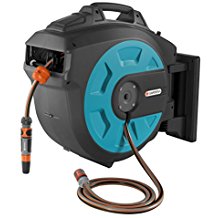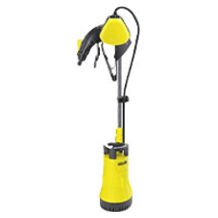Hose reel cart purchasing advice: how to choose the right product
- The most important things in a nutshell
- A garden hose cart ensures that the garden hose can be stored compactly and transported easily.
- A hose cart prevents cracks and kinks in the hose.
- A hose cart can hold hoses up to 100 metres long, making it a worthwhile investment for small to large gardens of over 1,000 square metres.
- When choosing the right hose reel, it is important to pay attention to the hose storage capacity, the material of the frame and drum as well as the winding mechanism.
Garden hose cart in use
If you have your own garden, you should water your flowers, vegetables and lawn regularly during the hot summer months. For this purpose, the amateur gardener usually needs a long garden hose. But where do you put the hose to store it after work and have it ready for the next use?
If the hobby gardener rolls up his hose by hand, he will quickly encounter the problem that the hose kinks, twists or even forms loops and knots. If he wants to unwind the hose for the next use, it can prove to be quite unruly. Frequent kinking can even damage the hose and cause it to wear out more quickly, such as cracking. A remedy in this case is a garden hose reel, which ensures that the user can unwind the hose without having to
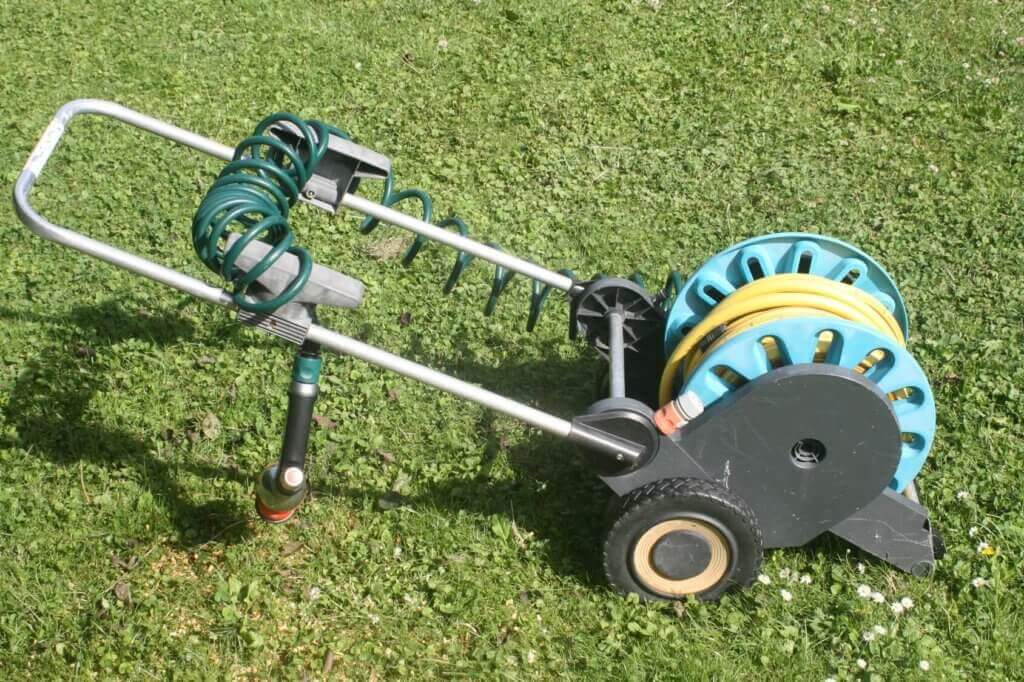
- space-saving,
- kink-proof,
- easy to transport,
- ready for immediate use and
- unrollable as needed
and can be rolled away as needed. This not only facilitates the all-too-hosey gardening work, but also prolongs the life of the watering helper.
What distinguishes a garden hose reel?
A garden hose cart, or hose reel for short, is a gardening tool that is used to wind a garden hose. Typically, a hose cart consists of various elements:
- Chassis with two wheels and stand
- Hose reel with hose connection, supply connection and crank handle
- Frame with handle for pulling or pushing
Hose trolleys are to be distinguished from hose reels and hose boxes. We explain what these differences are.
HOSE CARRIAGE
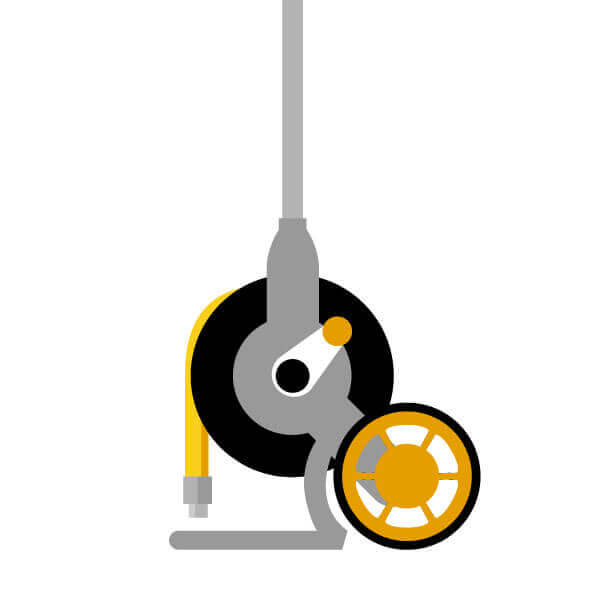
Hose carts are very easy to move because of their wheels and high metal frame with handle. Nevertheless, they are compact in storage, provided the handle can be retracted and extended. As with hose reels, the user manually rolls the hose onto the uncovered hose reel by means of a crank. With hose lengths of 20 to 60 metres, mobile carts are suitable for gardens of medium to large size. Professional hose carts can even accommodate hoses up to 100 metres long.
HOSE BOX
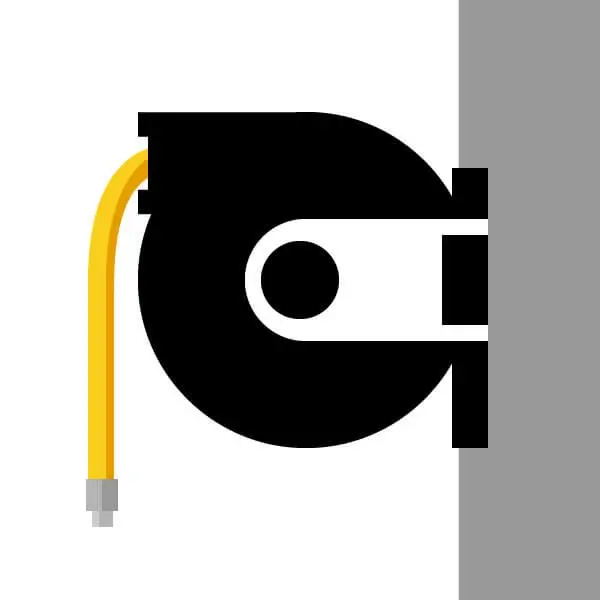
Hose boxes usually have a wall mounting. The hose automatically winds over a drum that is fully covered with a plastic cover and can be extended to the desired length if necessary. Small hose boxes with a hose length of up to ten metres are ideal for balconies and terraces, large hose boxes with a hose length of up to 35 metres can even be used in large gardens. A hose box should be installed near a water tap and can remain connected to the water network.
HOSE REEL
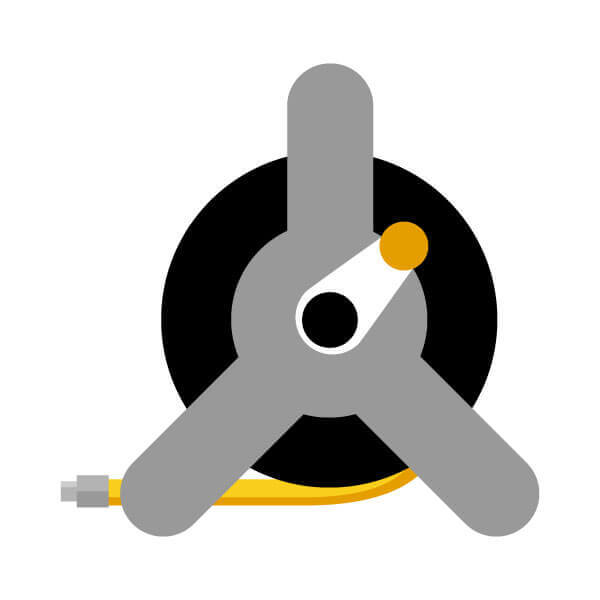
Hose reels are more portable than the stationary mounted hose boxes. However, they do not have an external cover and the hose is rolled in manually by means of a crank. Unlike the hose cart, hose reels have no wheels and must be carried. With hose lengths of ten to 50 metres, they are suitable for small to large gardens.
What should I look for when buying a garden hose reel?
Not all hose reels are the same and not every reel is suitable for every garden and every application. Therefore, interested parties should inform themselves in advance about the factors they should consider when choosing a product. We show the most important criteria to consider so that the hobby gardener does not get stuck with the hose in view of the large variety of products.
Capacity of the hose reel
If you do not buy a complete set of hose reel and hose, you should always make sure that the hose reel of the hose reel has sufficient capacity for the hose. The first action before choosing a hose reel should therefore be to measure the garden hose at home. Not only the hose length, but also the hose diameter plays a role. The manufacturer’s specifications for hose length refer to standard hoses with a diameter of 13 millimetres. If you want to connect a hose with a larger diameter, you should choose a hose reel with a larger hose capacity.
Hose too thick?
As a rule of thumb, if the hose has a diameter of three-quarters of an inch, which is about 19 millimetres, it will need twice the capacity of a standard hose when rolled up. A hose cart with a 60-metre capacity can therefore only take 30 metres of such a thick hose.
As a rule, hose reels can take a hose length of at least 60 metres, but some models can take up to 100 metres. It is advisable to choose a larger hose reel. If the user fully utilises the possible capacity, the hose reel can easily become top-heavy and thus unstable, so that it can easily tip over when pulled over uneven ground. If you want to be on the safe side, you should buy a hose cart set that already includes a hose that fits the cart perfectly.
What materials should the cart be made of?
There is no universally correct recommendation regarding the material of the frame and the hose reel of a hose cart. Both plastic and metal trolleys offer advantages and disadvantages. Let’s first look at the pros and cons of a pure plastic model:
Pro points
- Low weight
- Usually more adjustment options
- Do not damage the hose
Drawbacks
- More prone to tipping over
- Not UV resistant
- Less durable
In addition to plastic models, the market also offers models made of stainless steel, where both the frame and the hose reel are made of the rustproof metal. This variant also offers both advantages and disadvantages:
Pro points
- Durable
- Stable riding characteristics
- UV-resistant
Drawbacks
- Higher weight
- Sometimes hose damage with poor workmanship
- Usually fewer adjustment options
In addition to these two variants, however, there are increasingly models that combine both materials and thus also combine the properties of both material groups. Most common are models with a plastic drum and plastic handle, while the frame itself is made of stainless steel.
Extendable handlebars are worth an additional investment, as they not only allow the hose reel to be stored as compactly as possible, but also make pulling the reel comfortable and easy on the back.
Winding mechanism and winding aids
Inexpensive models in general, but also many brand-name models, do not have an automatic rewind, but must be operated manually by means of a crank attached to the hose reel. While an automatic rewind is extremely convenient, this feature is of course also reflected in the price and tends to be more prone to malfunctions or defects.
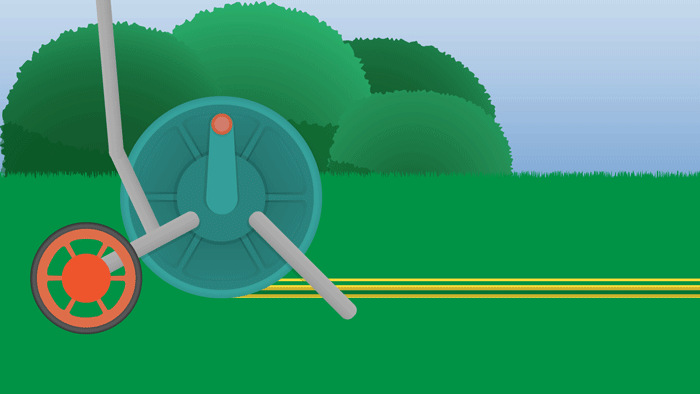
In order to be able to wind the hose as evenly as possible onto the reel, higher-priced models often have a winding aid that automatically moves back and forth as the hose is wound up, thus guiding and distributing the hose evenly over the reel. This means that water hoses that have become tangled or even knotted due to untidy winding do not stand a chance! However, models that do not have this feature can sometimes be retrofitted with appropriate accessories from the respective manufacturer. The advantages of such a winding aid for the user are obvious:
- He does not have to bend down to wind up.
- His hands stay clean because he does not have to manually guide the hose over the drum.
- He makes optimum use of the drum width and thus the take-up capacity.
- The hose can be unwound without snagging.
In the case of manually operated rewind mechanisms, the user should ensure that the trolley has a retractable crank. Such a crank ensures that the trolley is as compact and easy to store as possible, and also prevents the crank from breaking off due to carelessness when moving the hose or the trolley tipping over.
Accessories for more convenience
If you use different spraying attachments, you should make sure that the hose trolley has compartments or connectors into which the attachments can be clicked, so that they can always be transported and stored on the trolley within easy reach. It also makes sense to have a hose holder on the frame into which the end of the hose can simply be hung or clicked into place after use so that it does not lie loose on the reel or drag across the floor. This also prevents the hose from dripping.
What should I look out for when using a garden hose reel?
Anyone who owns a hose reel should pay attention to a few aspects when using it in order to enjoy the practical garden helper for as long as possible.
- Pull the hose reel slowly and carefully, so that it does not move sideways, sway or tip over.
- Pull the hose cart and not push it, as this makes it easier to navigate.
- Slightly lift the hose cart to negotiate higher steps.
- Unroll the hose slowly and carefully and, when watering, make sure that the hose is always unrolled far enough to prevent the hose reel from falling over.
- Do not unroll the hose completely in advance, but only as needed.
- Place the hose reel securely on level ground.
- Guide the hose with one hand during rewinding so that it is evenly distributed on the reel.
- Do not use hoses that are too long or too heavy
- Only open the crank handle to rewind the hose and then retract it again.
- Do not leave the hose reel permanently exposed to UV radiation, but store it indoors.
Connect the garden hose reel to the water supply.
Adapters are usually included in the delivery to ensure that the water supply hose fits onto the water tap. Connecting the supply hose to the garden hose trolley is also usually very easy. On most hose reels, there is a coupling on the outside of the reel onto which the hose can be attached by means of a plug connection. In detail, the connection works in different ways depending on the model, so it is advisable to take a look at the instruction manual of the hose reel.
The following video demonstrates the use of a Gardena hose reel and shows the correct handling and connection of the hose reel to the water supply:
Frequently asked questions about garden hose reels
The most frequent questions from interested parties about garden hose trolleys mainly relate to deciding which size and hose capacity is the most suitable for individual needs. We address these questions.
How long should the hose be?
The recommended hose length is determined by the size of the garden. The owner of a roof terrace will naturally need a less long hose for watering his plants than the owner of a sprawling garden area with vegetable and fruit cultivation. We offer a short table as a rough guide:
| Garden size | Hose length |
|---|---|
| Up to 100 square metres | 10 metres |
| Up to 200 square metres | 15 metres |
| Up to 300 square metres | 20 metres |
| Up to 500 square metres | 25 metres |
| Up to 600 square metres | 30 metres |
| Up to 800 square metres | 35 metres |
| Up to 1.000 square metres | 40 metres |
| Over 1.000 square metres | 60 metres and more |
How thick should the hose be?
But the length is not everything! The thickness of the hose is also important, because it should match the diameter of the hose connection on the hose reel. As a rule, hose connections in Germany have a diameter of half an inch, i.e. about 13 millimetres.
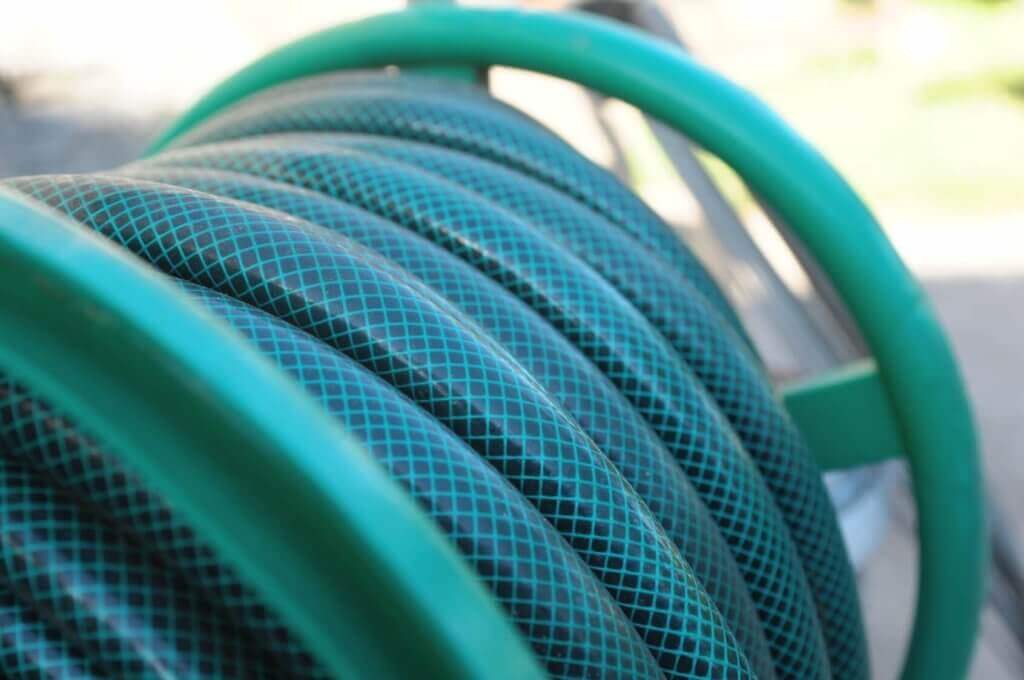
In addition, there are numerous other diameters, such as 15 and 19 millimetres. While the standard diameter is completely sufficient for small gardens, it is advisable for owners of large gardens to use larger hose diameters for a greater water flow. Here it is important to ensure in advance that the hose reel is compatible with larger hose diameters.
A larger hose diameter increases the space required for the hose on the hose reel considerably. So if you want to use a long and thick hose, you should choose a hose reel with a large capacity. The hose length specified by the manufacturer usually refers to 13-millimetre hoses.

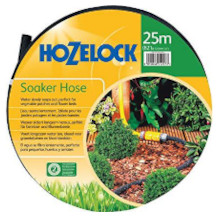
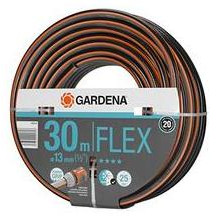
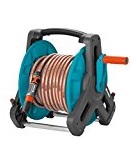
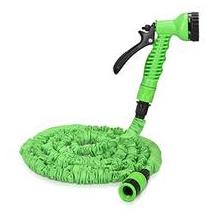

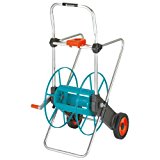
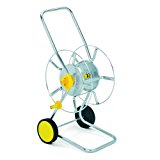
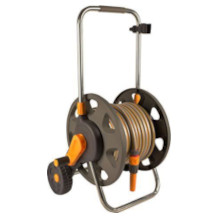
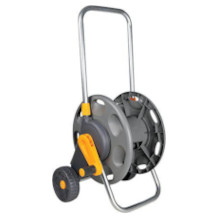

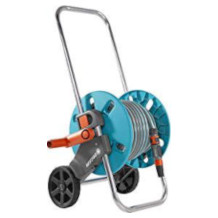
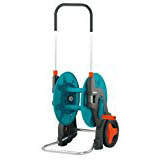
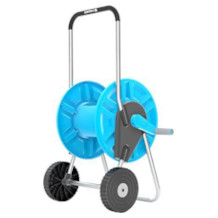
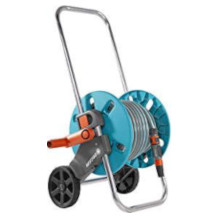
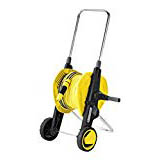
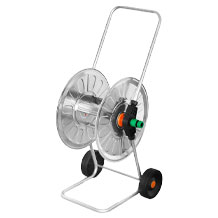

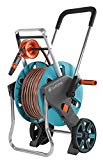

 3,992 reviews
3,992 reviews

